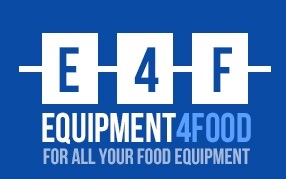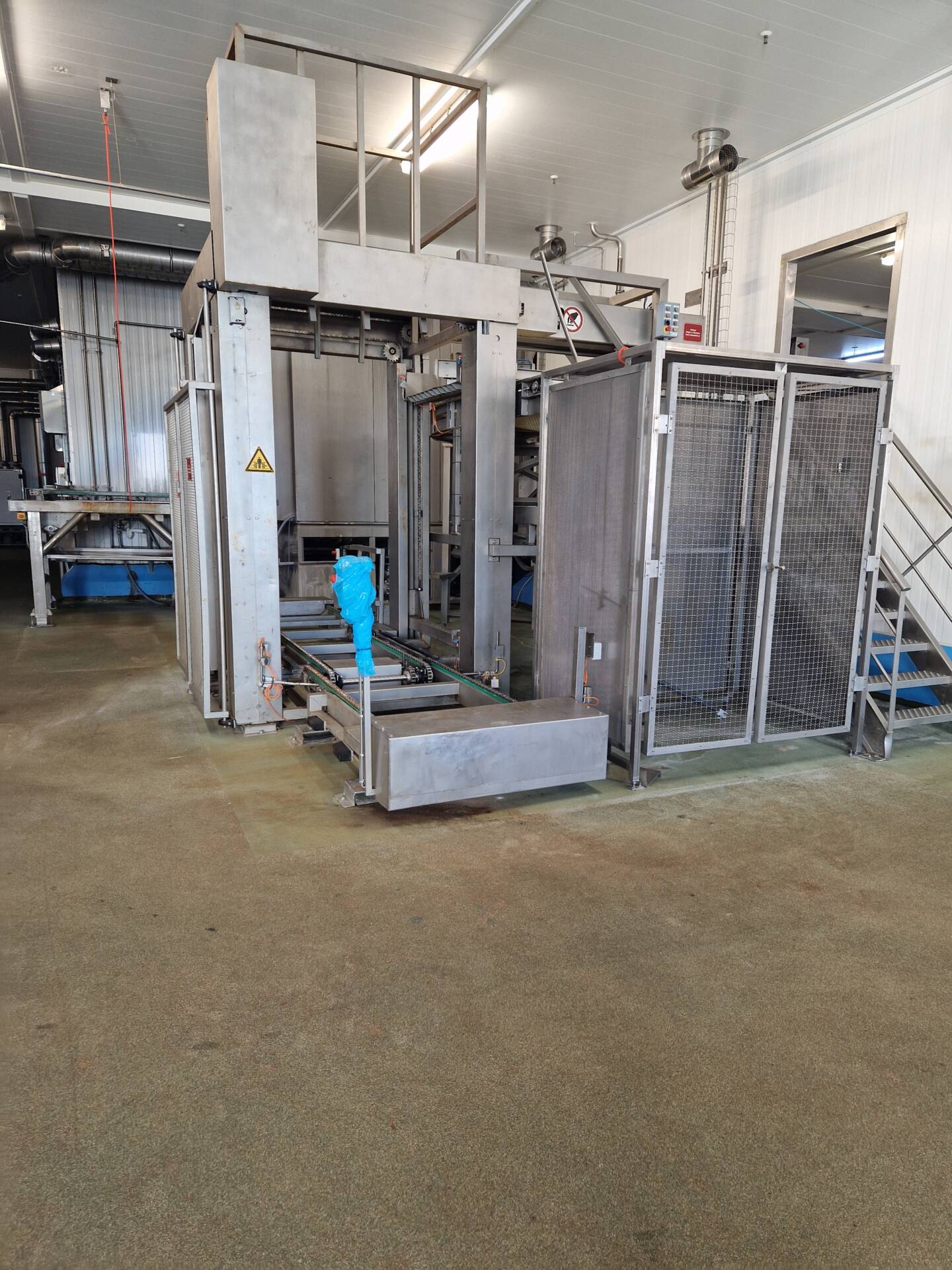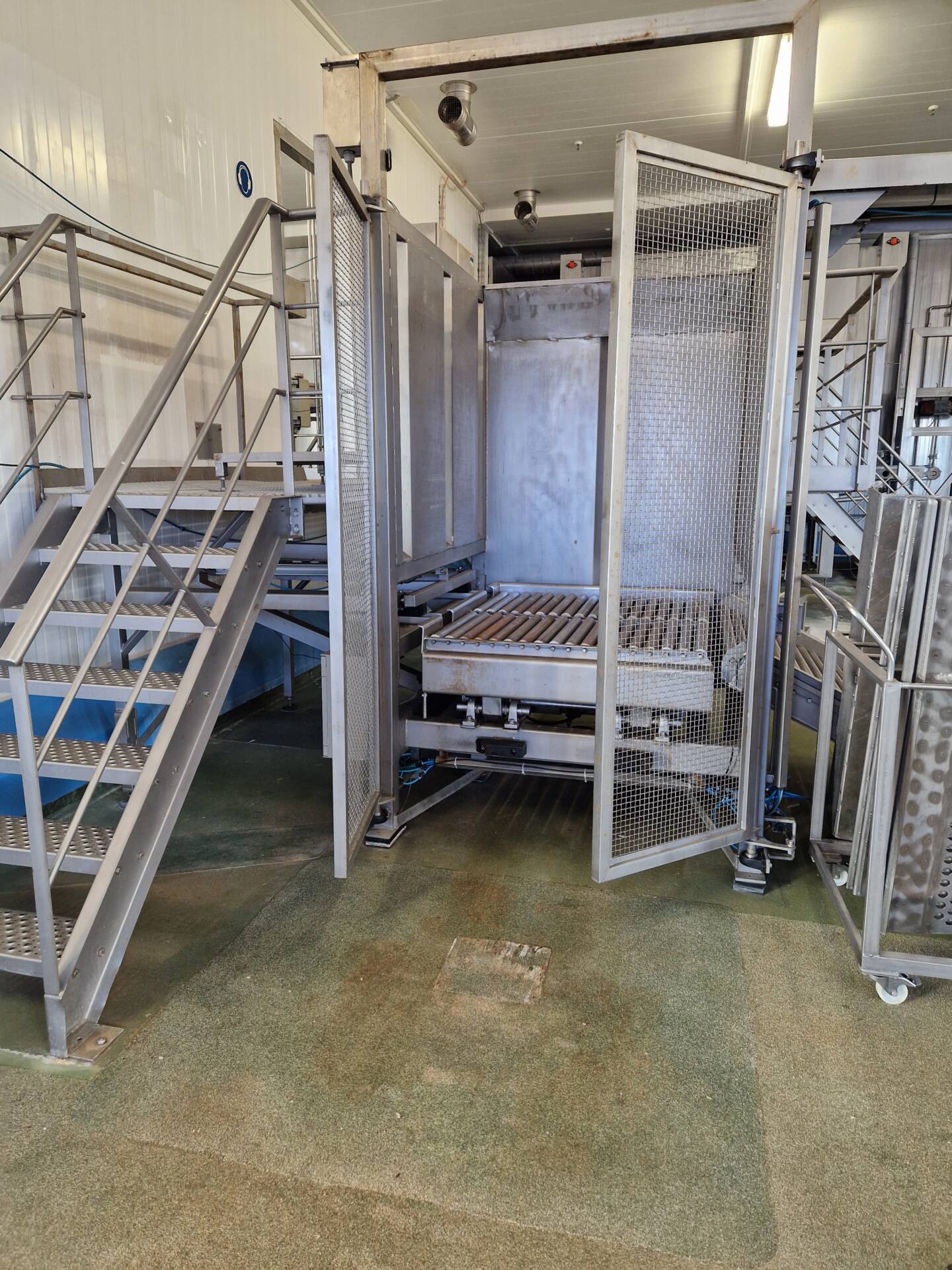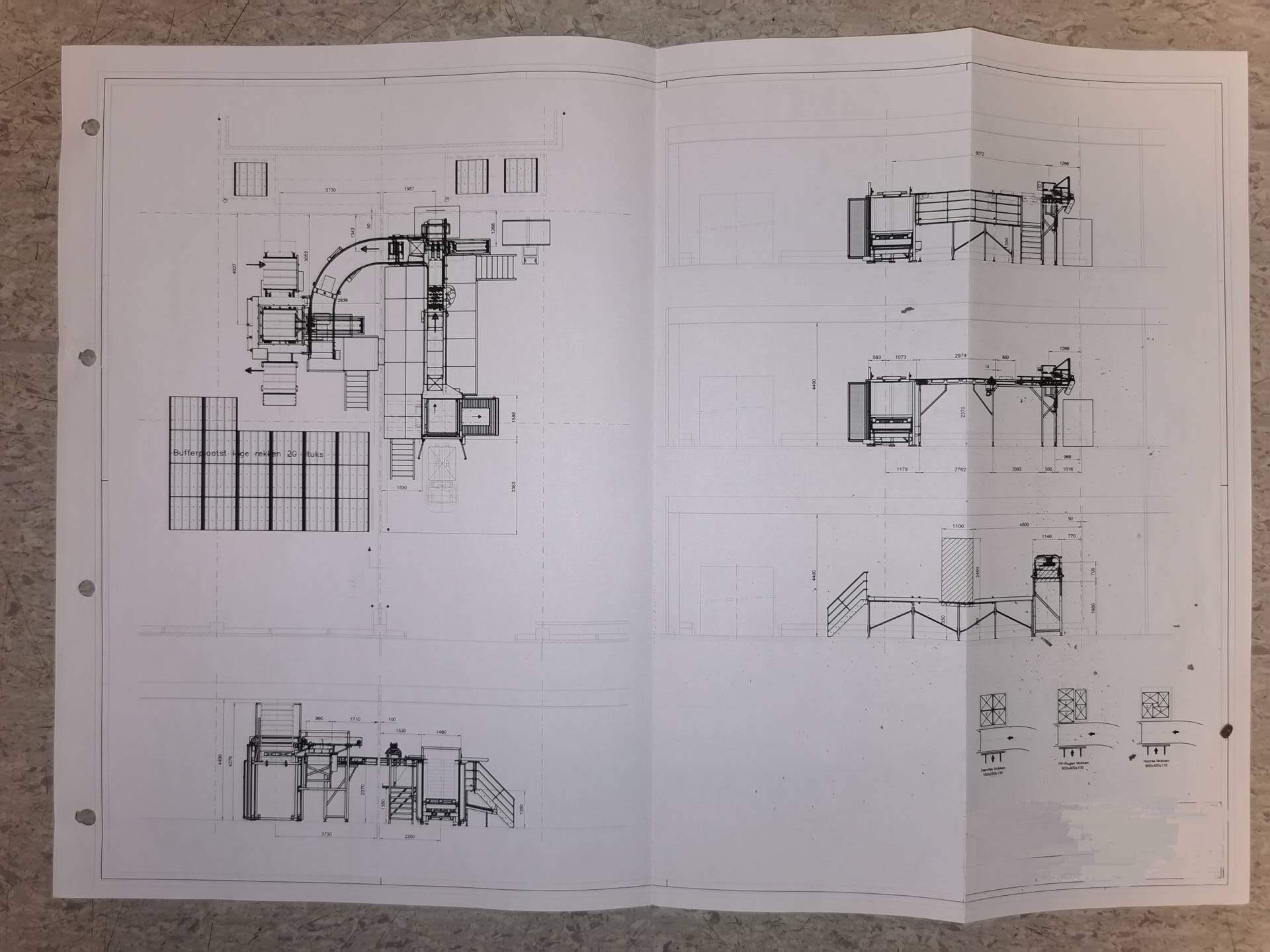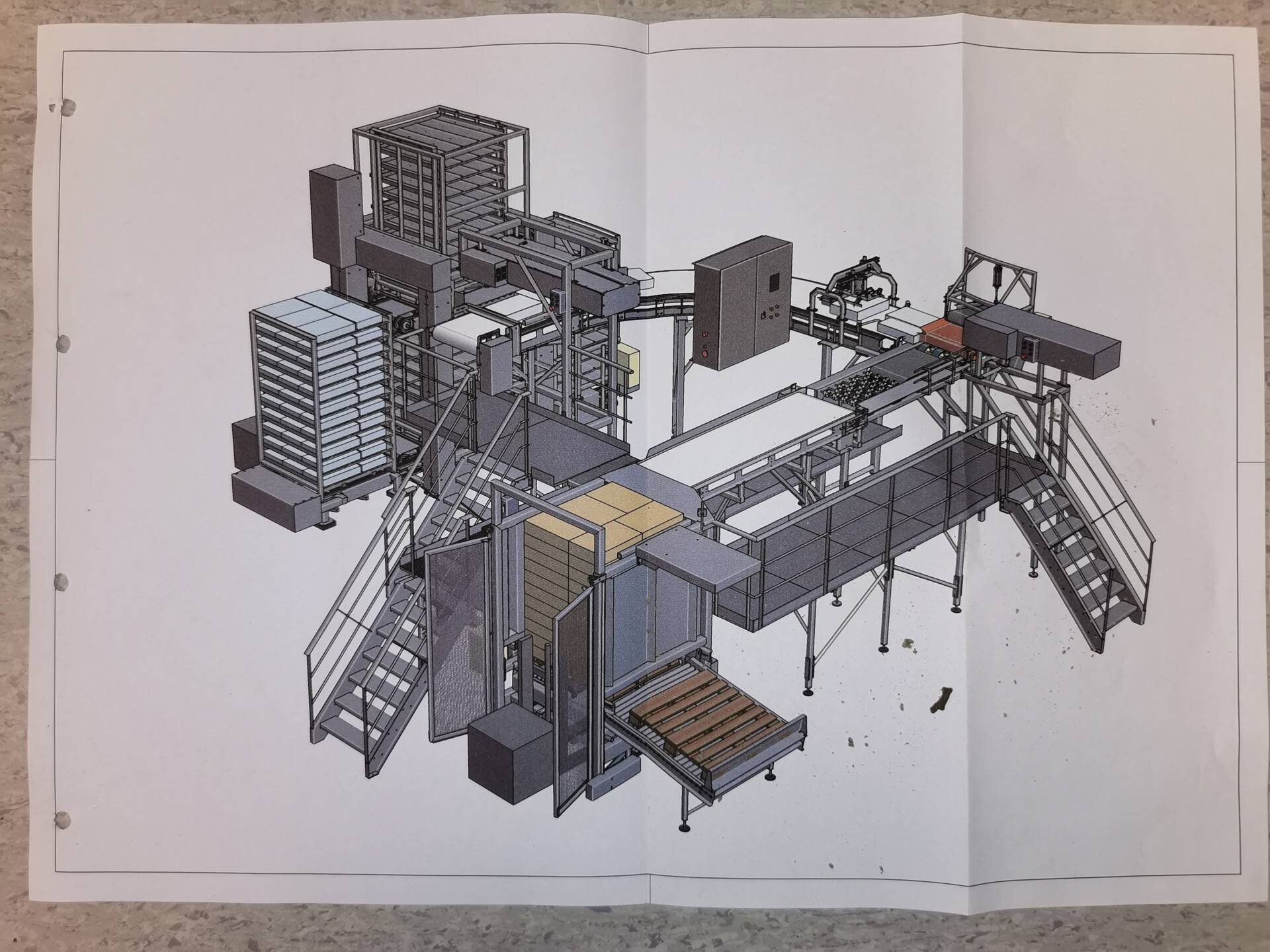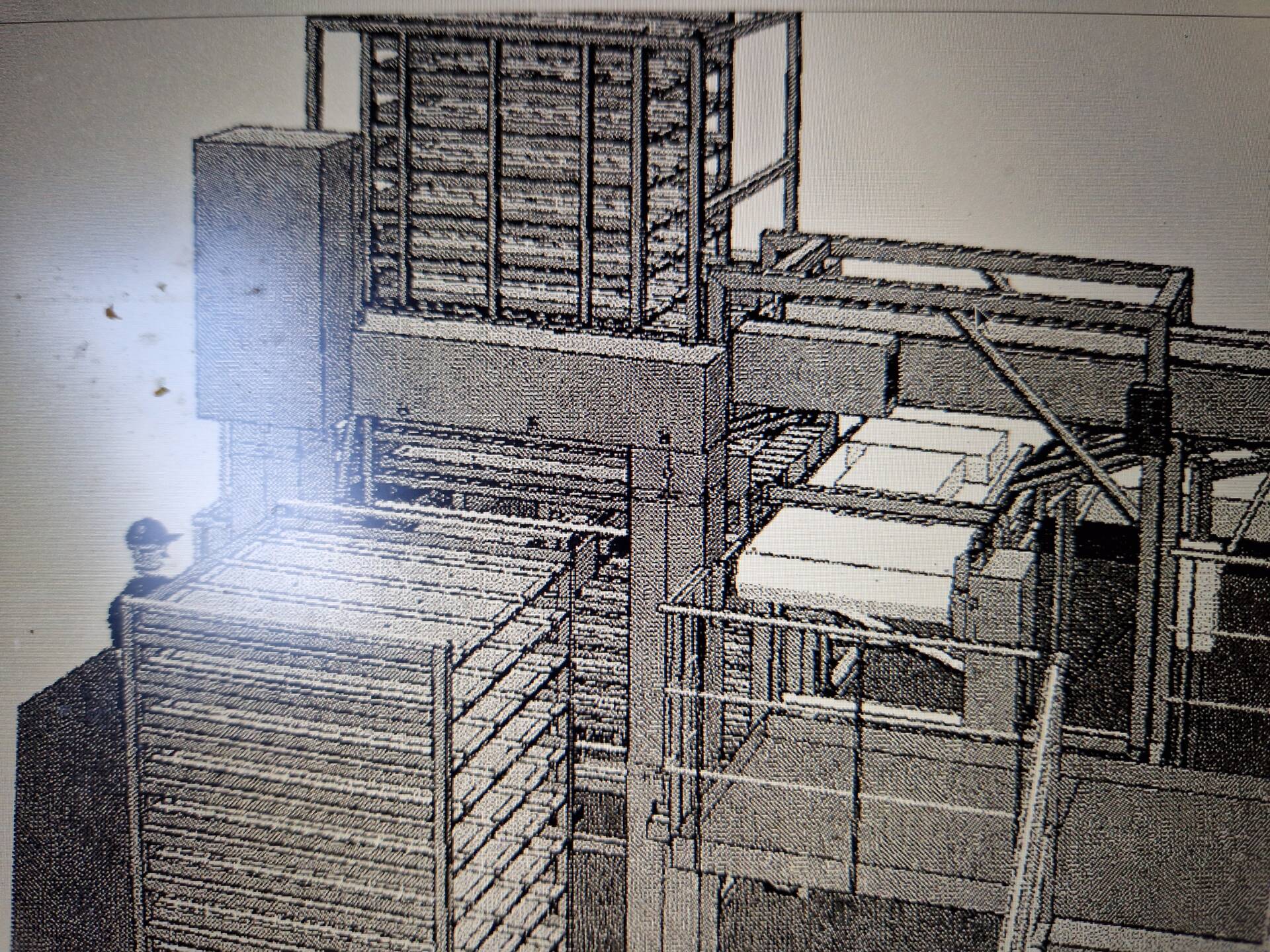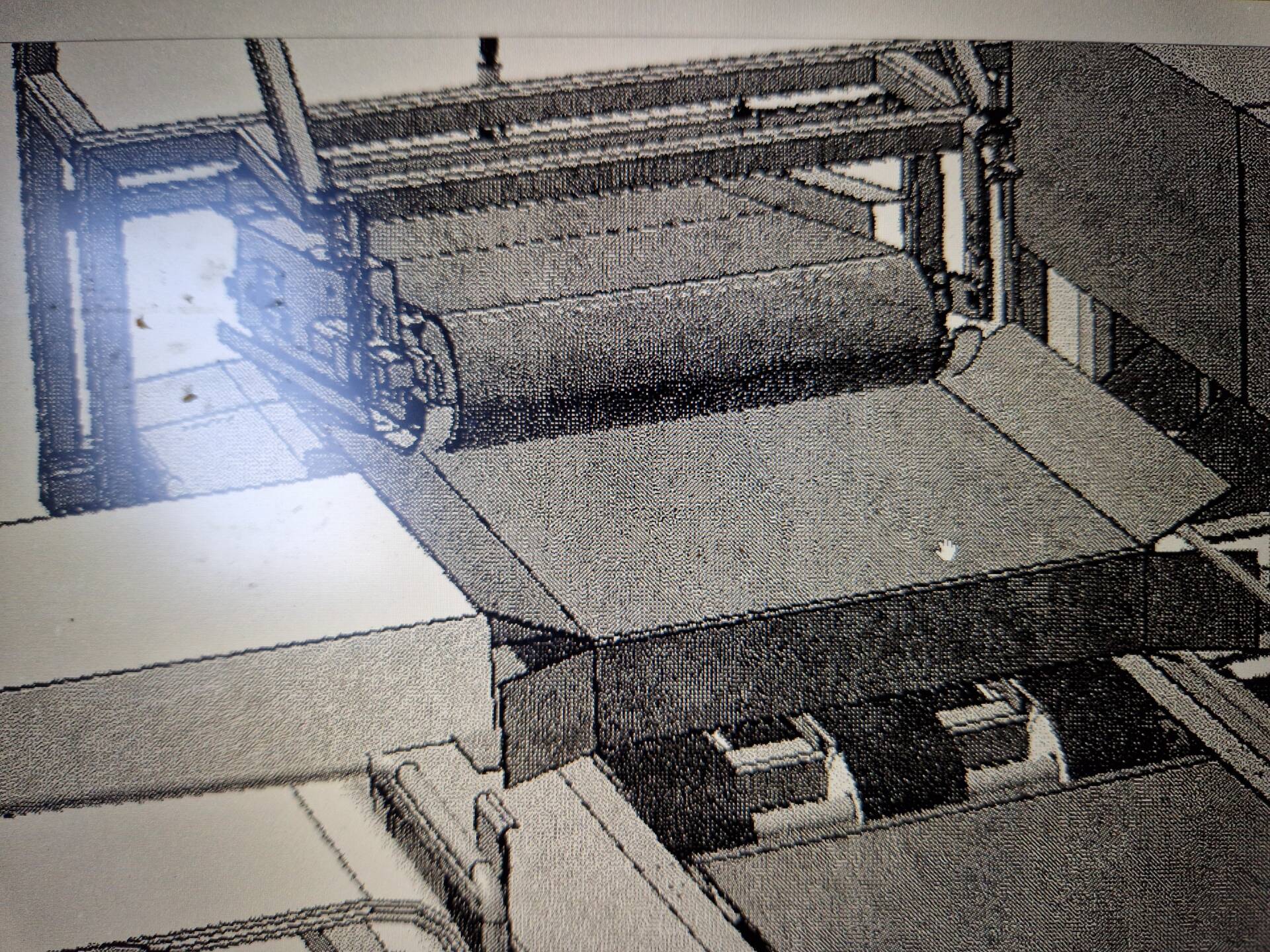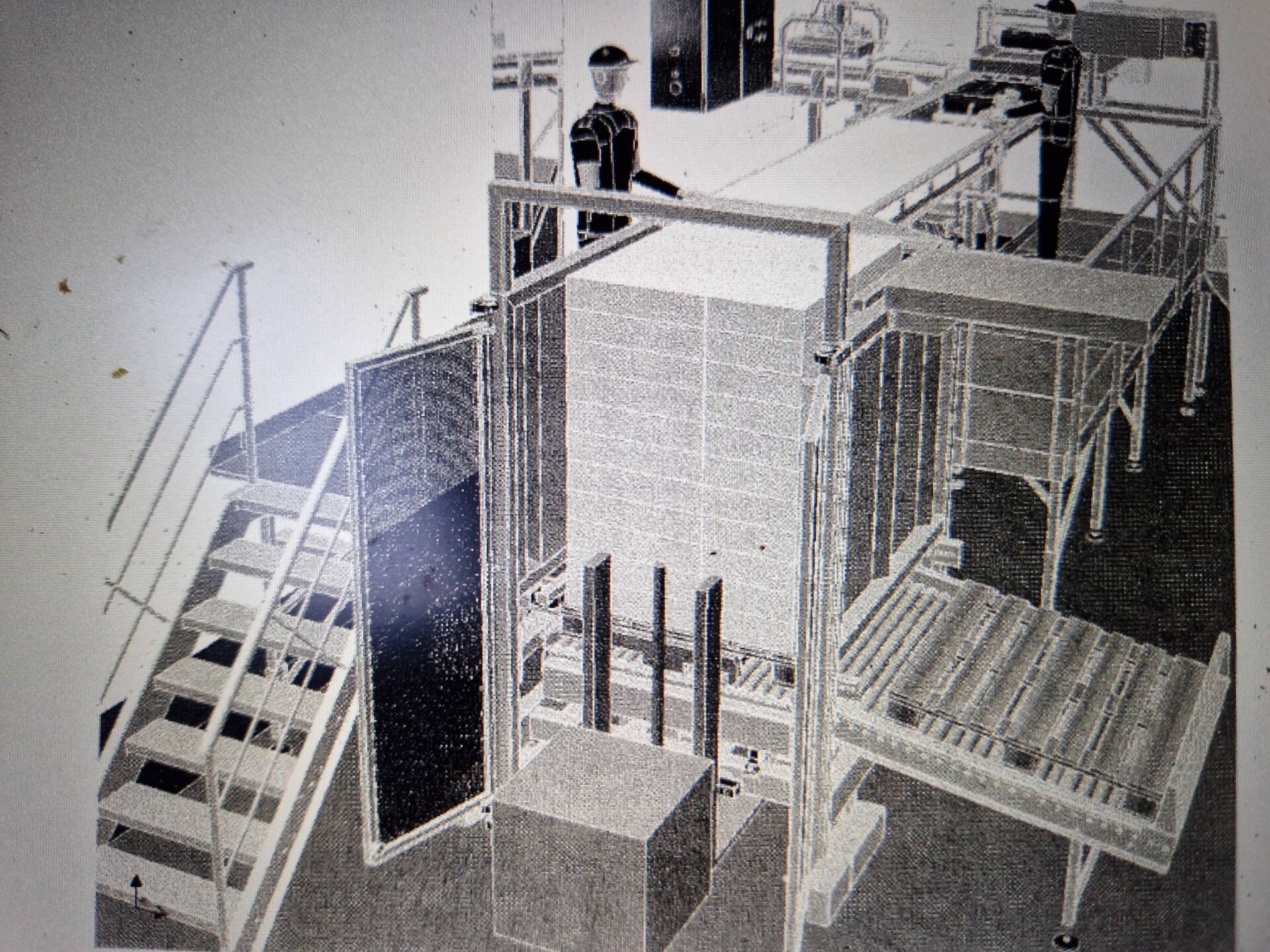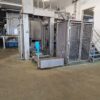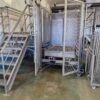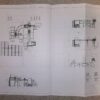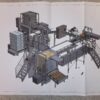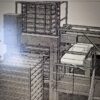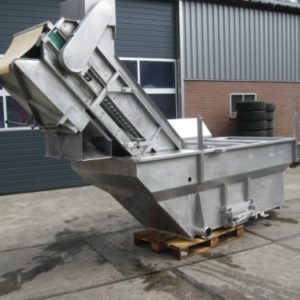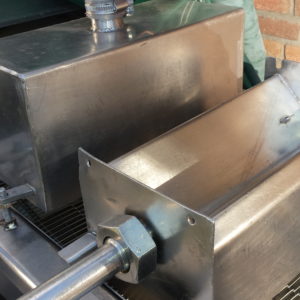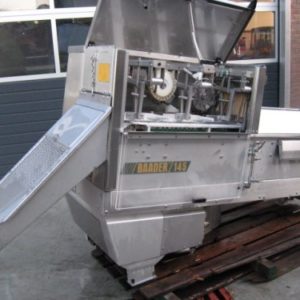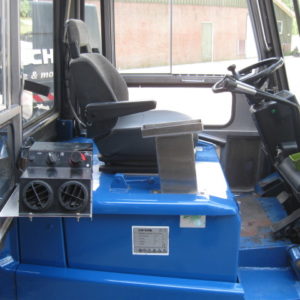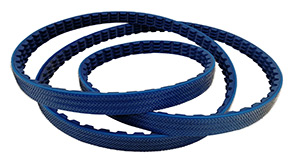- Pallet Unloading frozen blocks and stacking machine , ready for defrosting
“pallet unloading machine” to unload the frozen blocks of fish packed in carton boxes, trom the pallets.
The pallet wil be lifted by a scissor lift. This lift is driven by two hydraulic cylinders. The Pallet.wil/ be put on the lift by a truck, than the doors will close.
‘~\ The scissor lift shall rise until the top-layer of the fish-blocks will be in the line of the photo cel, now the fish-blocks can be shoved on the conveyor (see chapter 2). This
Wil be done which each layer of fish-blocks until the pallet is empty. When the pallet is empty the scissor lift wil/ go down. When the lift is in his lowest position, a pusher will shove the pallet on toa roller conveyor.
Now a new pallet can be placed in the machine
The machine includes:
1.1 A Stainless steel frame with two pneumatic driven doors and a roller conveyor
1.2 A scissor lift, driven by two hydraulic cylinders and a Hydro-unit.
1.3 A pusher to shove the blocks towards the operator.
1.4 A pusher to shove the pallet from the platform on toa roller-conveyor
1.5 A Pneumatic Switch Board.
- Discharge Transport
The frezen blocks of fish that carne off of the “pallet unloading machine” need to be transported to the little ball conveyor. At this point the straps of the sea- frozen- carton boxes will be cut off manually. And for the Norwegian boxes the top will be taken off.
The blocks are now being transported towards the black-pusher (Chapter 3).
When the blocks arrive at the black-pusher they will be hold by a vacuum-arm that comes from under the transport, the pusher now goes out and pushes the frozen fish-block out of the carton onto the 90° conveyor.
See page 2
Page 2
The discharge transport includes:
2.1 A discharge conveyor with a length of approximately 3 meters
– 2.2 A Ball Conveyor
– 2.3 A discharge conveyor with a length of approximately 1 meters
– 2.4 A Vacuum-Arm to hold the blocks
- Black-Pusher
- Description:
This device pushes the frozen black out of the carton box onto the 90°
conveyor.
- Carton discharge- and squeeze conveyors
- Description:
When the frozen blocks are being pushed out of the cartons, the carton boxes will be transported and squeezed between two conveyors.
The squeezed cartons will than fall into a bin.
- 90° Conveyor
- Description:
The 90° conveyor transports the frozen blocks from the block pusher after the discharge transport, to the block pusher that is located at the stacking machine. On the 90° conveyor a twister is mounted (Chapter 6) to turn the blocks in the direction that’s needed tor the stacking machine.
Half way the conveyor also a stopper is mounted this has the function to let 2 blocks pass to push in to the rack on the stacking machine, and the third one
has to wait until the blocks are pushed in and the pusher is back in its starting position.
- Stacking Machine
Description:
On the 90° conveyor a twister is mounted to turn the blocks in the direction that’s needed for the stacking machine.
Regular frozen blocks are approximately 550x550x100, for the stacking of those blocks we don’t need the twister.
But there will be also blocks produced with a size of approximately
600x400x100 and 600x400x110.
,~ For those black we use the twister. When we are going to stack those blocks, it needs to be done in a special way. To stack those blocks correctly we must push in one black lengthways and the other sideways, so one black has to be
twisted and the other doesn’t.
When the blocks are twisted correctly they will be transported towards the black pusher, the black will stop at a bumper. When the blocks are located in front of the pusher, the pusher will go out and push the block into a rack that’s positioned at the stacking machine.
When one layer of the rack is filled with blocks, the rack will lower to its next level and new blocks can be pushed in until each layer will be filled with blocks.
When the rack is full, it will be transported out of the stacking machine by a chain-transport and a new empty rack will be located in the stacking machine.
